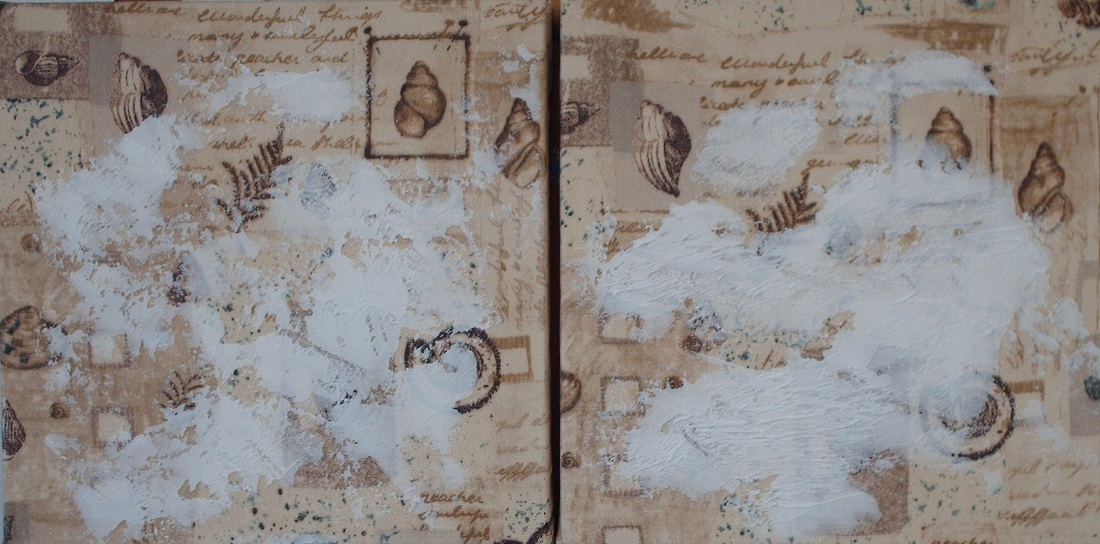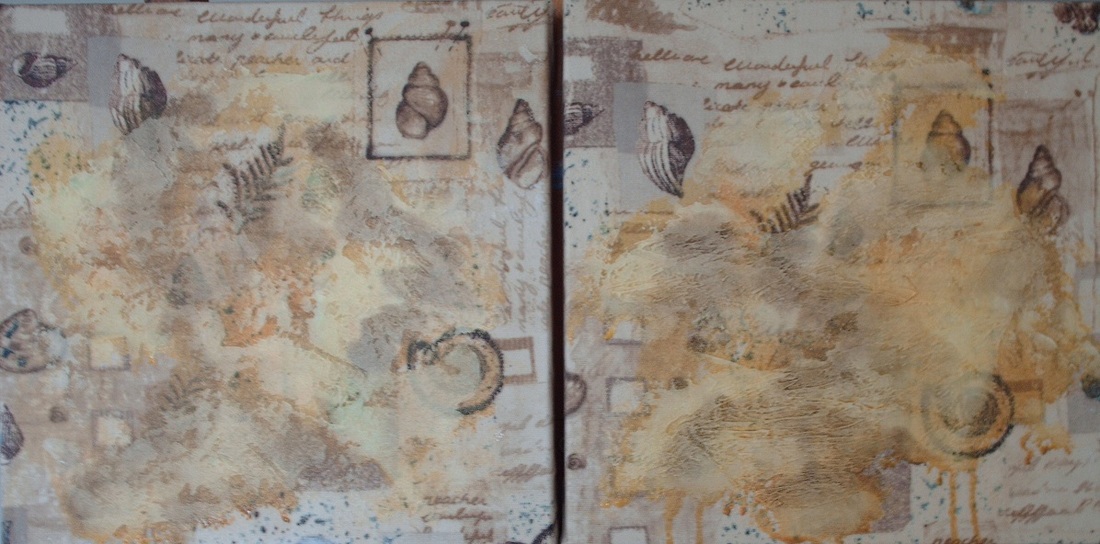Monday I did a presentation on colour for an Ottawa art organization. Lots of information shared and lots of really great questions and "AHA!" moments... oh, and the projector didn't let me down! Whew! (Technology is great... when it works!)
Tuesday was a day spent shopping for art supplies and equipment. In my Wednesday class at one of the area retirement homes we are going to be doing Gelli Printing. This is such fun because there are all kinds of things you can do to create different effects. If you spread your background paint on the plate you can print it directly onto a piece of paper, or you can lay a stencil down on top of the paint and then pull your print, leaving bare paper where the stencil was, creating interesting patterns. Then you can lift the stencil and print that on paper, creating a reverse pattern of your original print, and the options go on and on. I'm looking forward to it!
I priced Gelli Plates, but the cost is prohibitive to purchase enough for an entire class to work with, so I purchased silicone baking sheets at about 1/10th of the price! They are not quite as good as the Gelli Plates, but come a close second, and if students really like doing the prints then they can purchase their own Gelli Plate.
Thursday, two classes start so there is prep to be done for both... not to mention that my "carry on" luggage on wheels, that I use to transport art supplies to classes, died at the end of the summer. One of the handles had been broken for a while but this time the wheels fell off! So, a trip to the Thrift Store was in order to find a new (to me) one. I found one about the same size for $10 and it's in pretty good shape. Should last me several years at least. Now all I have to do it transfer all of the supplies from one to the other by Thursday. More stuff to do!
Anyway, it's great to be back in the saddle again... keeps one from getting old... well at least there's no time to dwell on it!
In 1977 the Artists Equity Association, in the USA and certain manufacturers approached the American Society of Testing and Materials (ASTM) to develop some quality guidelines for artists colours. Up until this point manufacturers had their own formulas, often using pigments that faded or darkened with age, as well as having other quirky qualities that could not guarantee the archival quality of a piece of artwork. The ASTM tested many pigments for their qualities and established parameters for what constitutes an archival artist quality pigment.
Today, much of that information is actually on the label. The rest is available from the manufacturer, and quite frankly, if the information is not on the tube I would suggest that you probably shouldn't buy it if you are concerned about quality. After all, if a manufacturer was proud of the quality of their paint, surely they would subscribe to the ASTM guidelines and let everyone know that they have a quality product... well, wouldn't they?
So, here's what to look for on your colour tubes or jars or however you purchase it...
Colour Index Name: This is a code such at PY35 (this pigment is Cadmium Yellow and only this genuine pigment has this CIN). Every pigment has it's own CIN, which should be on the tube. This will help you determine if it's the colour you are looking for, especially if the manufacturer calls it by a Trade Name, such as "Winsor Yellow". You will also be able to determine if there are other pigments added to create the hue.
The ASTM also set guidelines for lightfastness of pigments, after extensive testing. Artist quality paints only use the ASTM I (Excellent) and ASTM II (Very Good) pigments. This means that if you are using artist quality paints then they are of archival quality.
These are the two most useful pieces of information that will help you select the right paints for your need, but the ASTM has lots more categories of information that are listed by the colour manufacturers in their literature about their products. If you would like to learn more about it please feel free to contact me. I have information that I can send you.
Also, if you want to learn more about mixing colours I'm giving a 2 hour hands-on workshop at Art School Fair on October 31 from 3 to 5 PM. For more information please go to http://www.artschoolfair.com/shopclasses/saw001.
As you may recall, last week I glued the background fabric to the canvases and gave them a generous coat of liquid medium. This week I applied a thin coat of Golden Light Molding Paste to partially cover some of the fabric. This particular medium is wonderful for backgrounds as it is porous when it dries and then acts like watercolour paper. By applying thin watery paint you can get that wet in wet look with acrylic paints and inks. Just a note though... as with watercolour paper, paint dries lighter because it is absorbed into the white background.
I used Naples Yellow, Nickel Azo Yellow, Indian Yellow Hue, Quinacridone Nickel Azo Gold and Raw Umber... pretty much earth tones, to add colour to my white Light Molding Paste. I used fluid acrylics, mixed with a generous amount of water and applied with a jumbo round synthetic watercolour brush, just mopping it on. Even as I was working I could see it lightening as it was absorbed. (In the photos below you can see how much lighter the first one became while I was going the second one.) No problem, you can always go back and add more paint or ink once you see how it dries.
This week I will continue to adjust the background until I'm completely happy with it then, for next week's blog, I will apply the stencils. I'm so looking forward to doing that! I hope you will tune in to see what happens.
If you would like to comment on anything in my blog, ask questions or suggest things you would like me to write about, please click on the heading at the top of this email and click on "Comments" to enter your thoughts and ideas. I look forward to hearing from you.
Best wishes,
Susan



 RSS Feed
RSS Feed